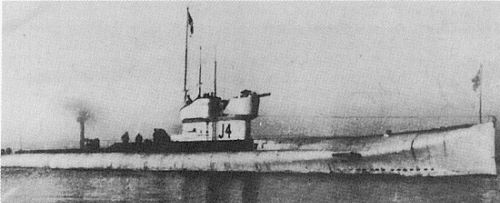

J2 1916
| Name | No | Yard No | Builder | Laid down | Launched | Comp | Fate |
| J1 (3/1919- RAN) | Portsmouth DYd | 4.1915 | 6.11.1915 | 4.1916 | sold 2.1924 | ||
| J2 (3/1919- RAN) | Portsmouth DYd | 5.1915 | 6.11.1915 | 7.1916 | sold 2.1924 | ||
| J3 | Portsmouth DYd | 1915 | --- | --- | cancelled 4.1915 | ||
| J4 | Portsmouth DYd | 1915 | --- | --- | cancelled 4.1915 | ||
| J3 (ex-J7) (3/1919- RAN) | Pembroke DYd | 3.1915 | 4.12.1915 | 6.1916 | sold 1.1926 | ||
| J4 (ex-J8) (3/1919- RAN) | Pembroke DYd | 3.1915 | 2.2.1916 | 8.1916 | sold 2.1924 | ||
| J5 (3/1919- RAN) | Devonport DYd | 4.1915 | 9.9.1915 | 5.1916 | sold 2.1924 | ||
| J6 | Devonport DYd | 4.1915 | 9.9.1915 | 7.1916 | sunk 15.10.1918 | ||
| J7 (3/1919- RAN) | Devonport DYd | 8.1916 | 21.2.1917 | 11.1917 | sold 11.1929 |
|
Displacement standard, t |
|
|
Displacement normal, t |
J1 - 6: 1204 / 1820 J7: 1212 / 1820 |
|
Length, m |
J1 - 6: 84.0 J7: 83.7 |
|
Breadth, m |
7.02 |
|
Draught, m |
4.27 |
|
No of shafts |
3 |
|
Machinery |
3 12-cyl Vickers diesels / 3 electric motors |
|
Power, h. p. |
3600 / 1350 |
|
Max speed, kts |
19.5 / 9.5 |
|
Fuel, t |
diesel oil 91 |
| Endurance, nm(kts) | 5000(12.5) |
|
Armament |
J1 - 5: 1 x 1 - 76/30 10cwt QF Mk II, 1 x 1 - 76/28 12pdr 8cwt QF Mk I, 6 - 450 TT (4 bow, 2 beam, 12) J6: 1 x 1 - 76/30 10cwt QF Mk II, 1 x 1 - 40/37 2pdr QF Mk III, 6 - 450 TT (4 bow, 2 beam, 12) J7: 1 x 1 - 76/45 20cwt QF Mk II, 1 x 1 - 40/37 2pdr QF Mk III, 6 - 450 TT (4 bow, 2 beam, 12) |
|
Complement |
44 |
| Diving depth operational, m | 50 |
Project history: The continuing incorrect intelligence reports of 22kt U-boats so worried the C-in-C of the Grand Fleet that he lobbied successfully for yet another attempt at a fleet submarine, capable of keeping station with the battle fleet. Vickers, already wrestling with the engines for the Nautilus, did not propose to use the 1850hp diesel, and suggested instead that the standard 8-cyl engine could be enlarged to 12-cyl, but it would still take three, and although 20kts was the speed asked for, the records suggest that 19.5kts was the accepted design-speed. Given the haste with which the design was to be prepared the Admiralty had no choice, and approved its one and only triple-shaft design in January 1915. The design was another partial double-hull type, with the double hull occupying 56% of the length. As built the large free-flooding casing brought the bows down in a seaway, slowing the boat down, so it was sealed off. After some months in service all had their bows raised, and thereafter could make 17kts in the heaviest seas.
Originally eight boats were approved, all from the Royal Dockyards, but two from Portsmouth DYd, J3 and J4, were cancelled and J7 and J8 were renumbered to fill the gap. A further boat was ordered for the RAN but she differed in important respects. The control room was moved from just forward of the beam TT to the motor room aft. The conning tower was therefore moved aft as well, but in other respects J7 was identical to her sisters.
Modernizations: about 1917, J1: + DC racks
1917-1918, J1: - 1 x 1 - 76/30, 1 x 1 - 76/28; + 1 x 1 - 102/40 BL Mk XI, 1 x 1 - 40/37 2pdr QF Mk III
1917-1918, J2, J4: - 1 x 1 - 76/30, 1 x 1 - 76/28; + 1 x 1 - 102/40 QF Mk IV, 1 x 1 - 40/37 QF Mk III
1917-1918, J5: - 1 x 1 - 76/30, 1 x 1 - 76/28; + 1 x 1 - 102/41 QF Mk VII, 1 x 1 - 40/37 QF Mk III
1917-1918, J6: - 1 x 1 - 76/30; + 1 x 1 - 102/41 QF Mk VII
1917-1918, J7: - 1 x 1 - 76/45; + 1 x 1 - 102/41 QF Mk VII
Naval service: J6 was sunk in error by British decoy ship Cymric 15.10.1918 off Blyth.

J4 1919
© Ivan Gogin, 2008-13